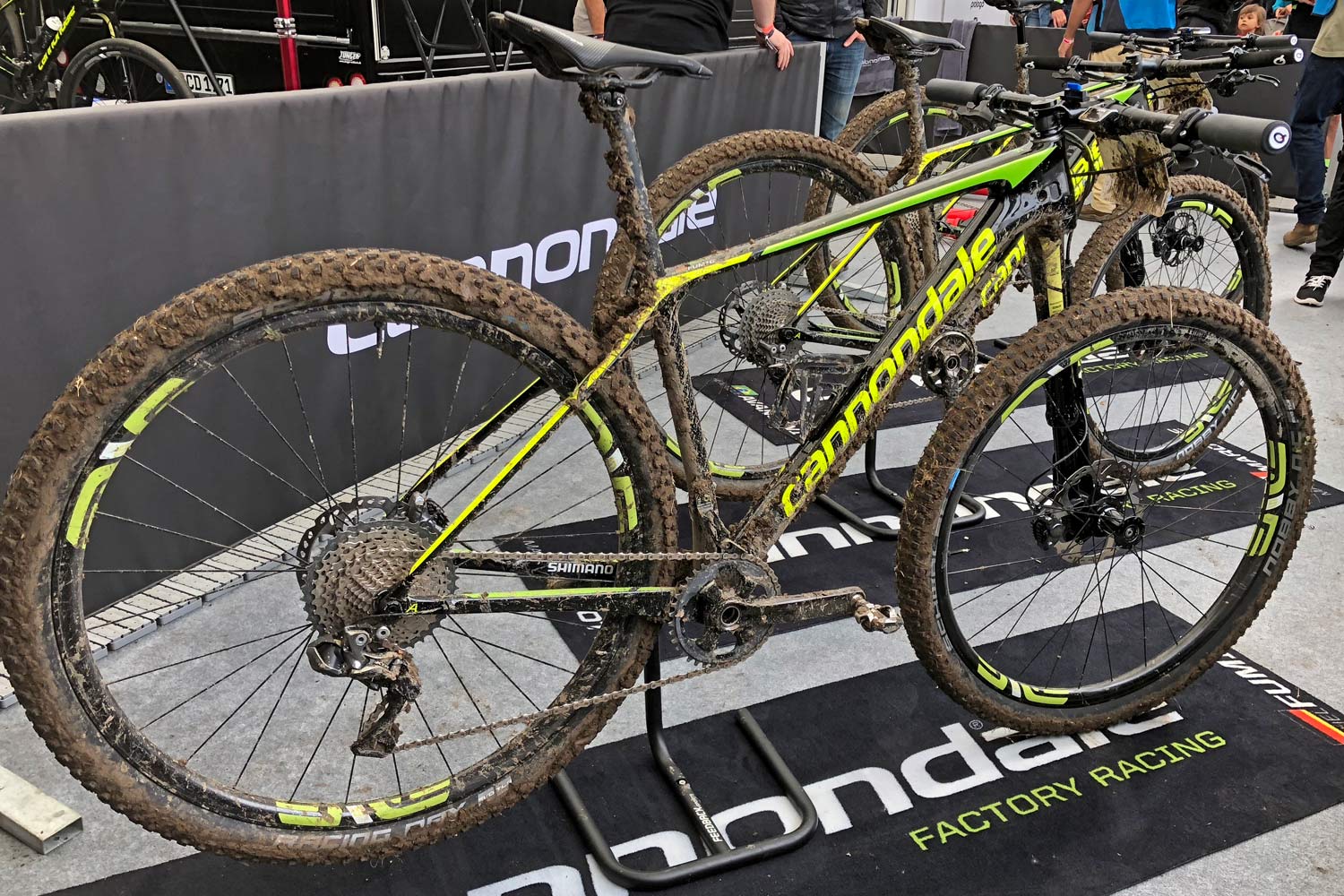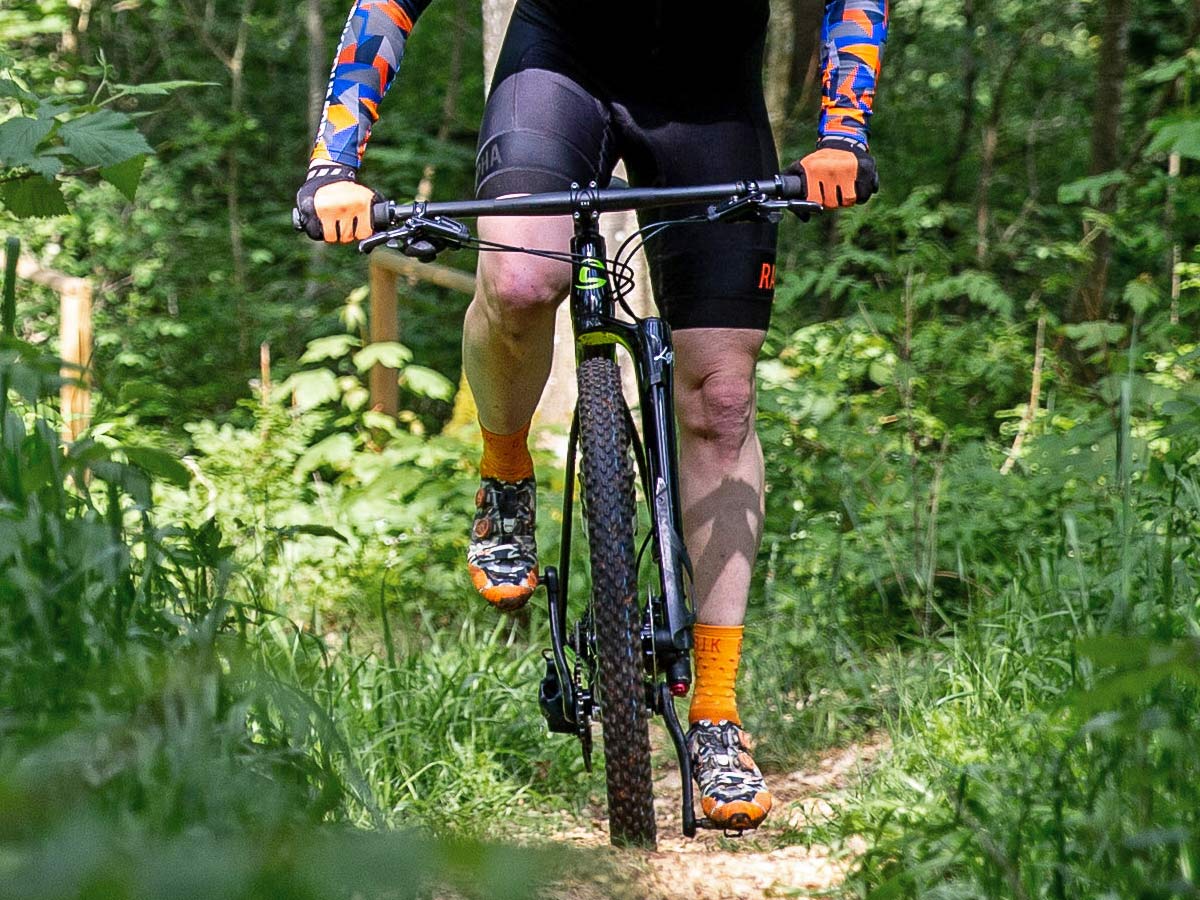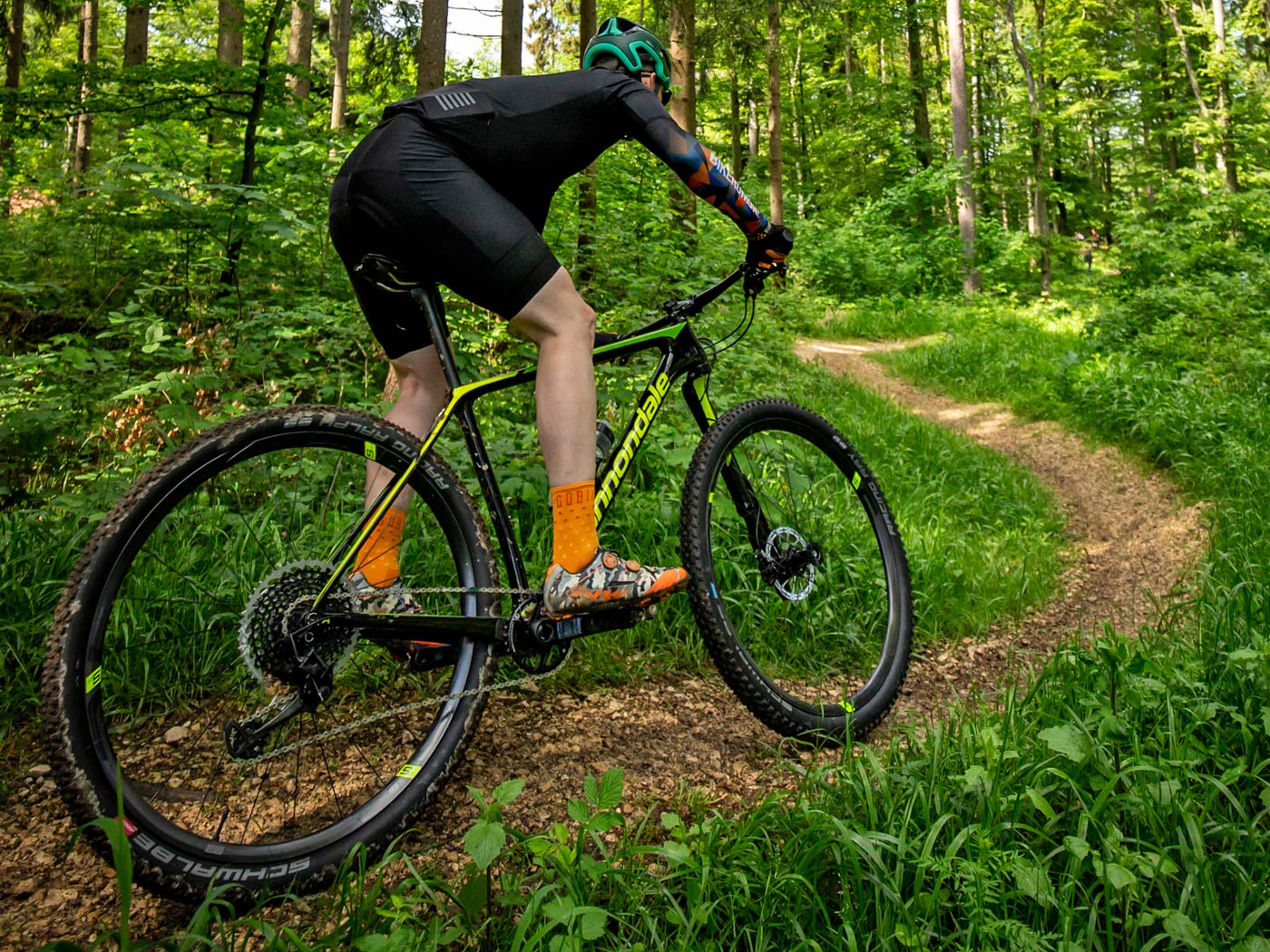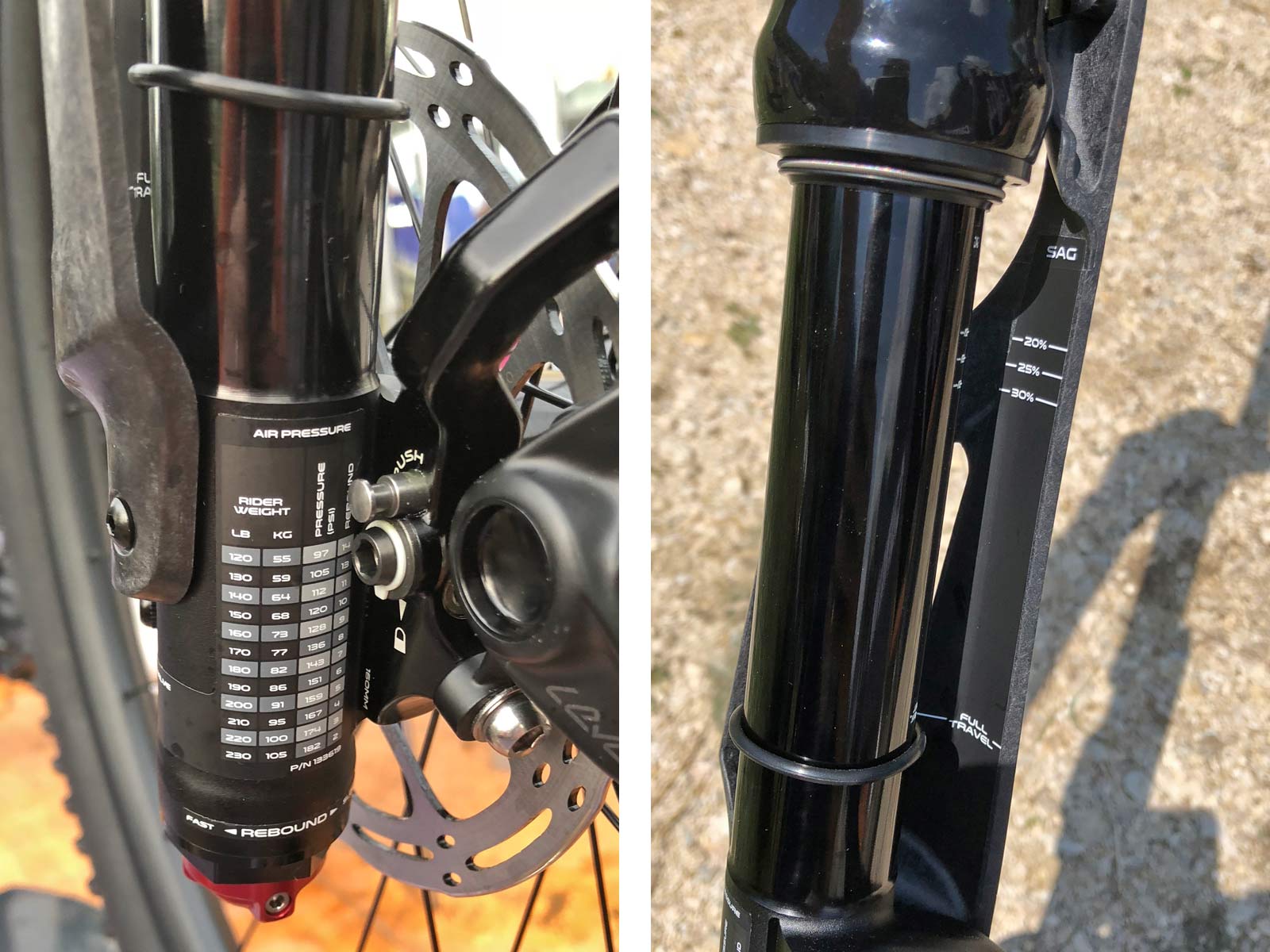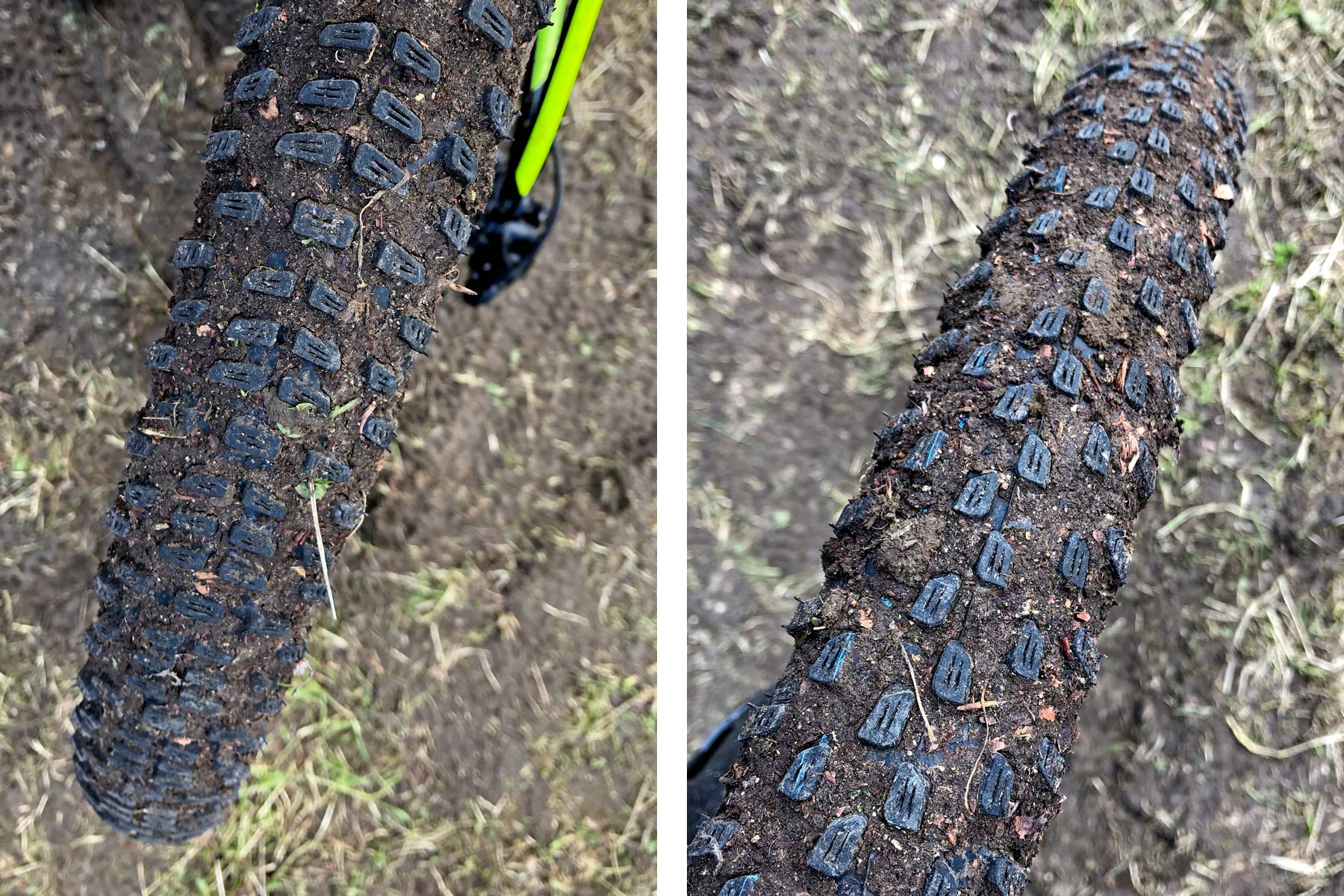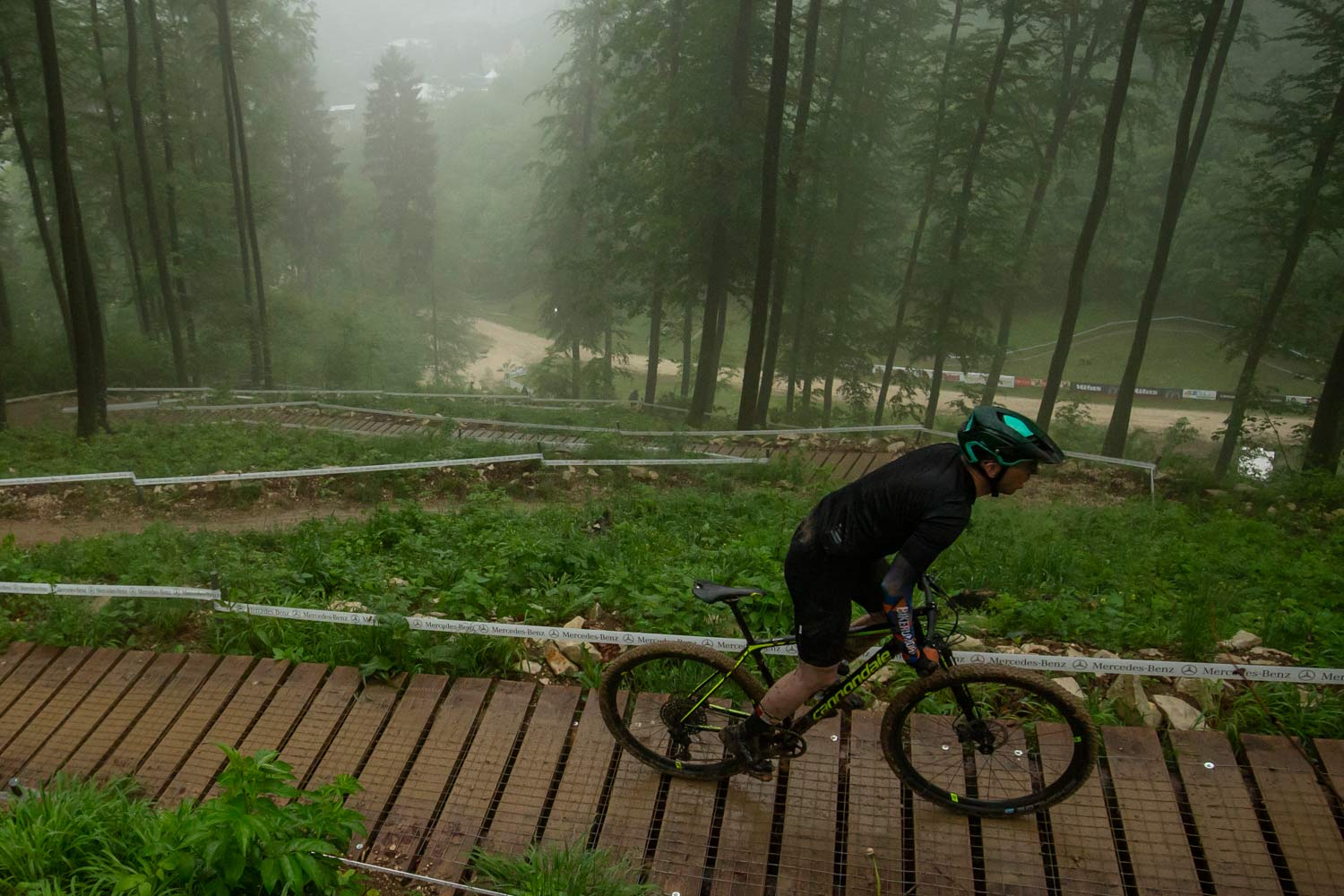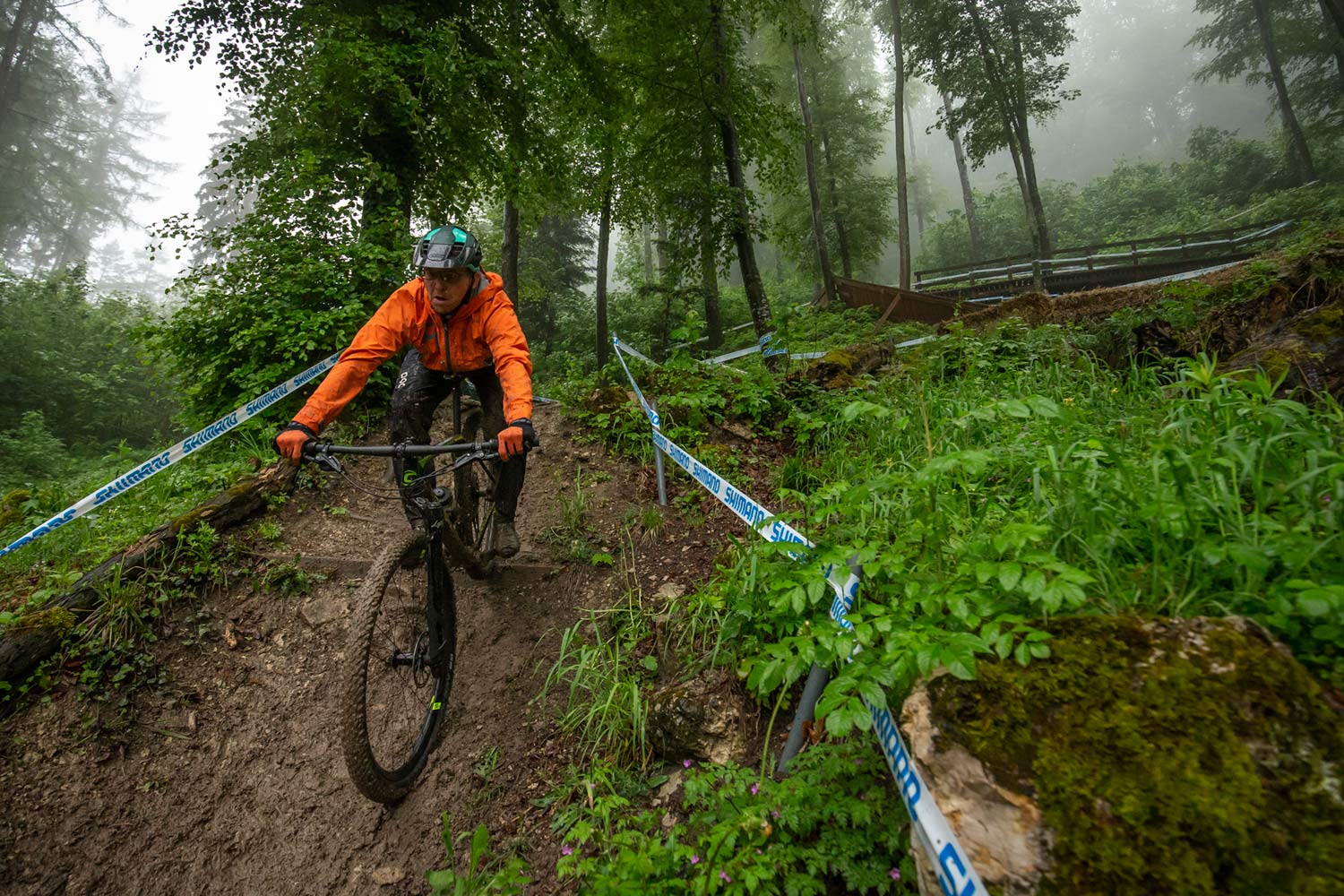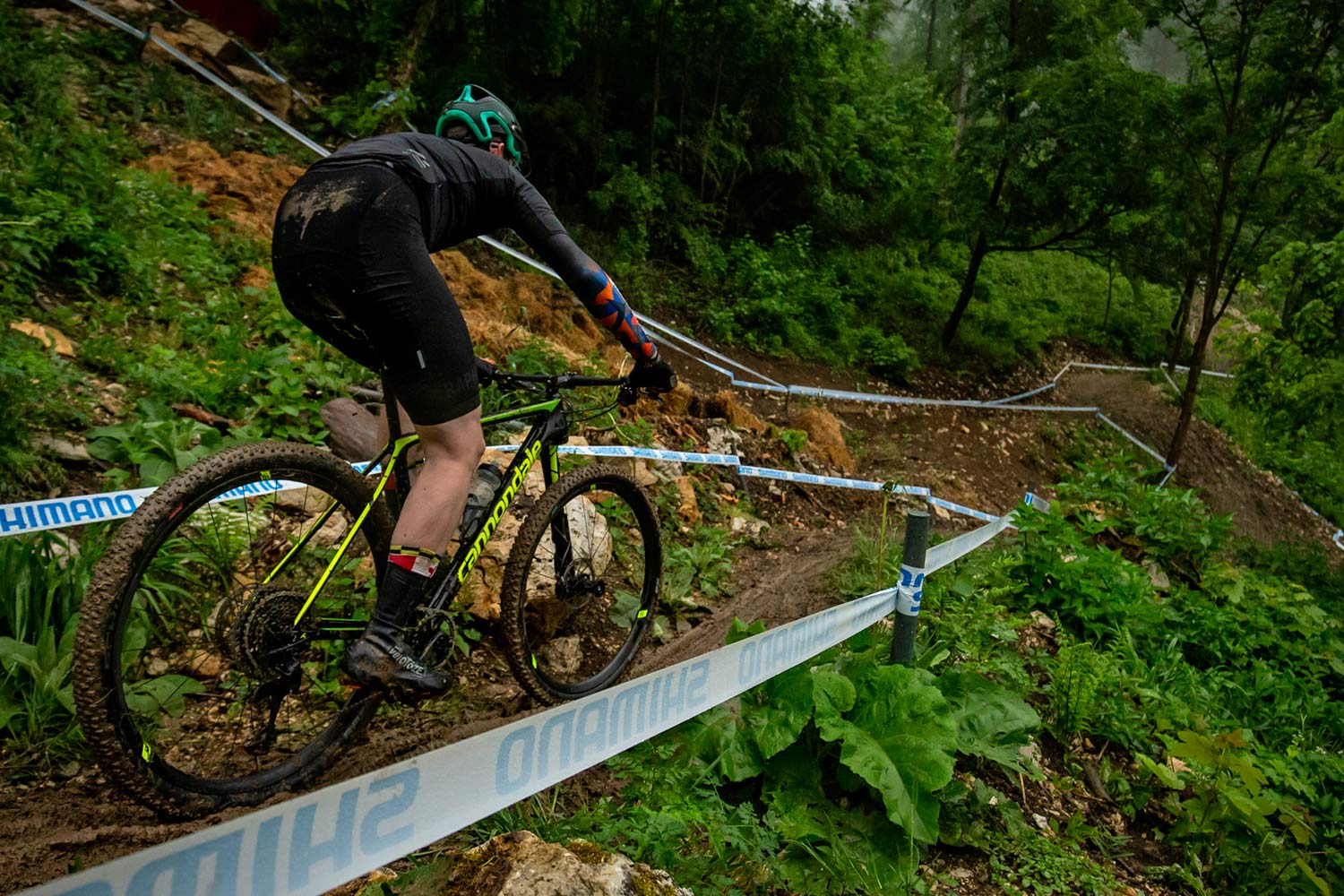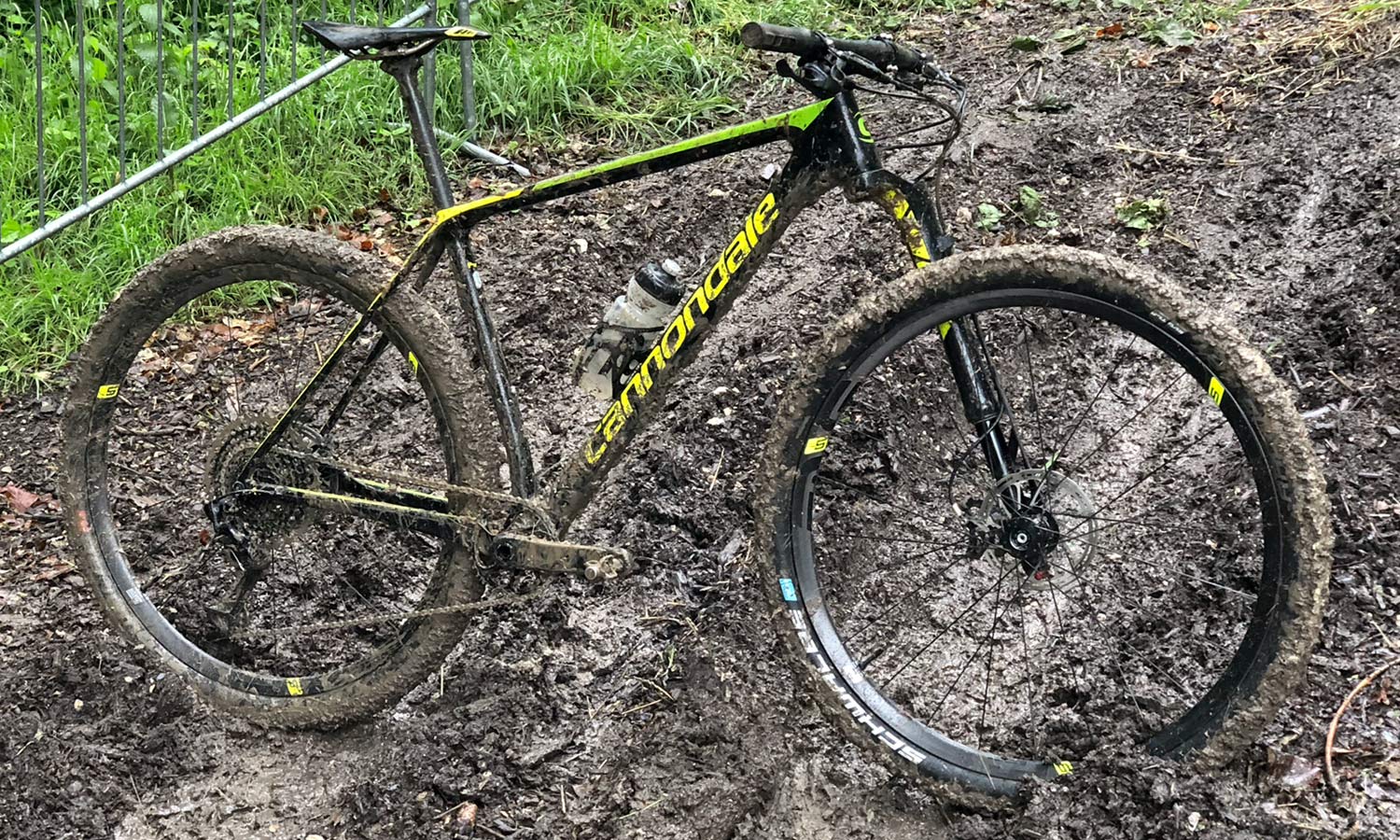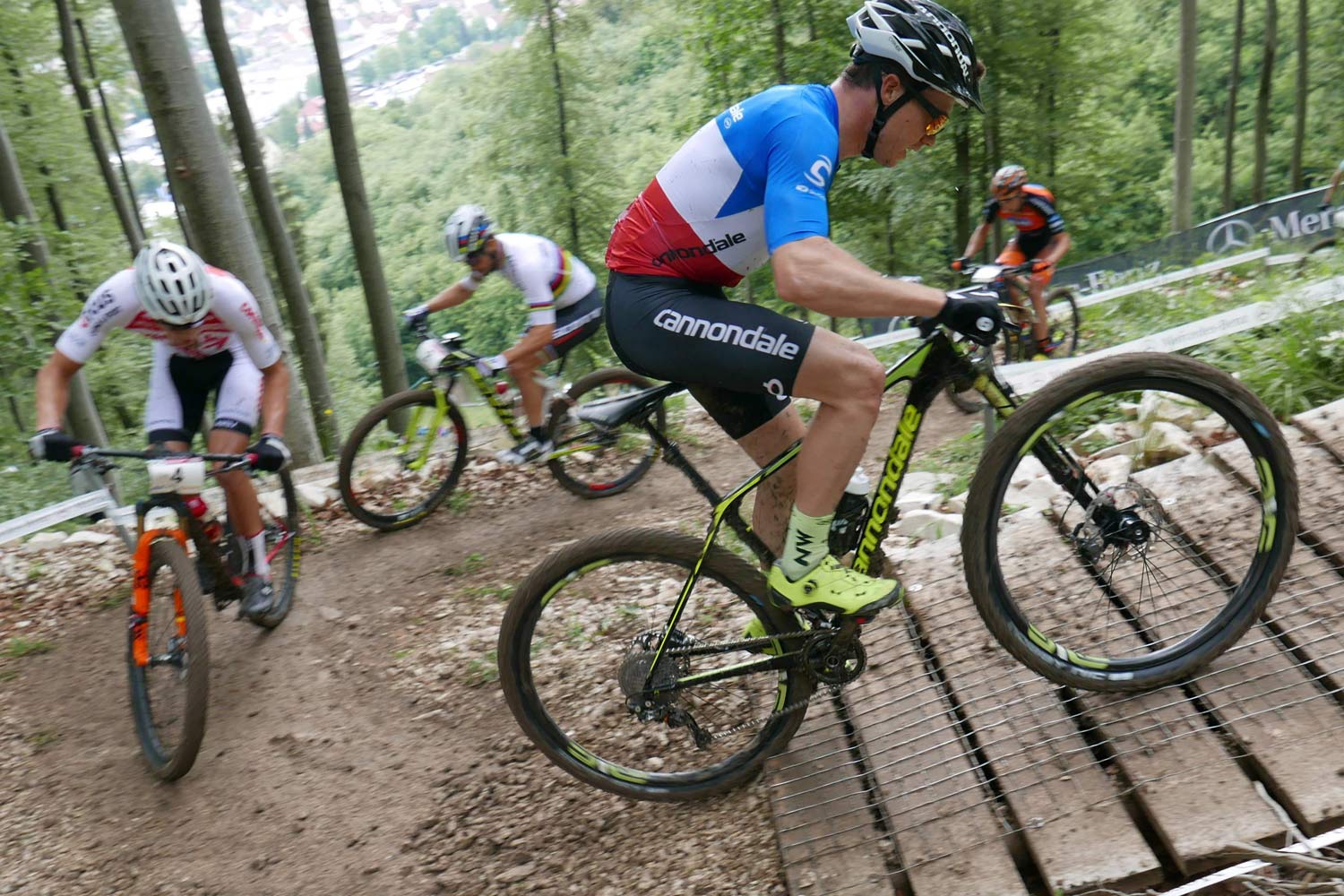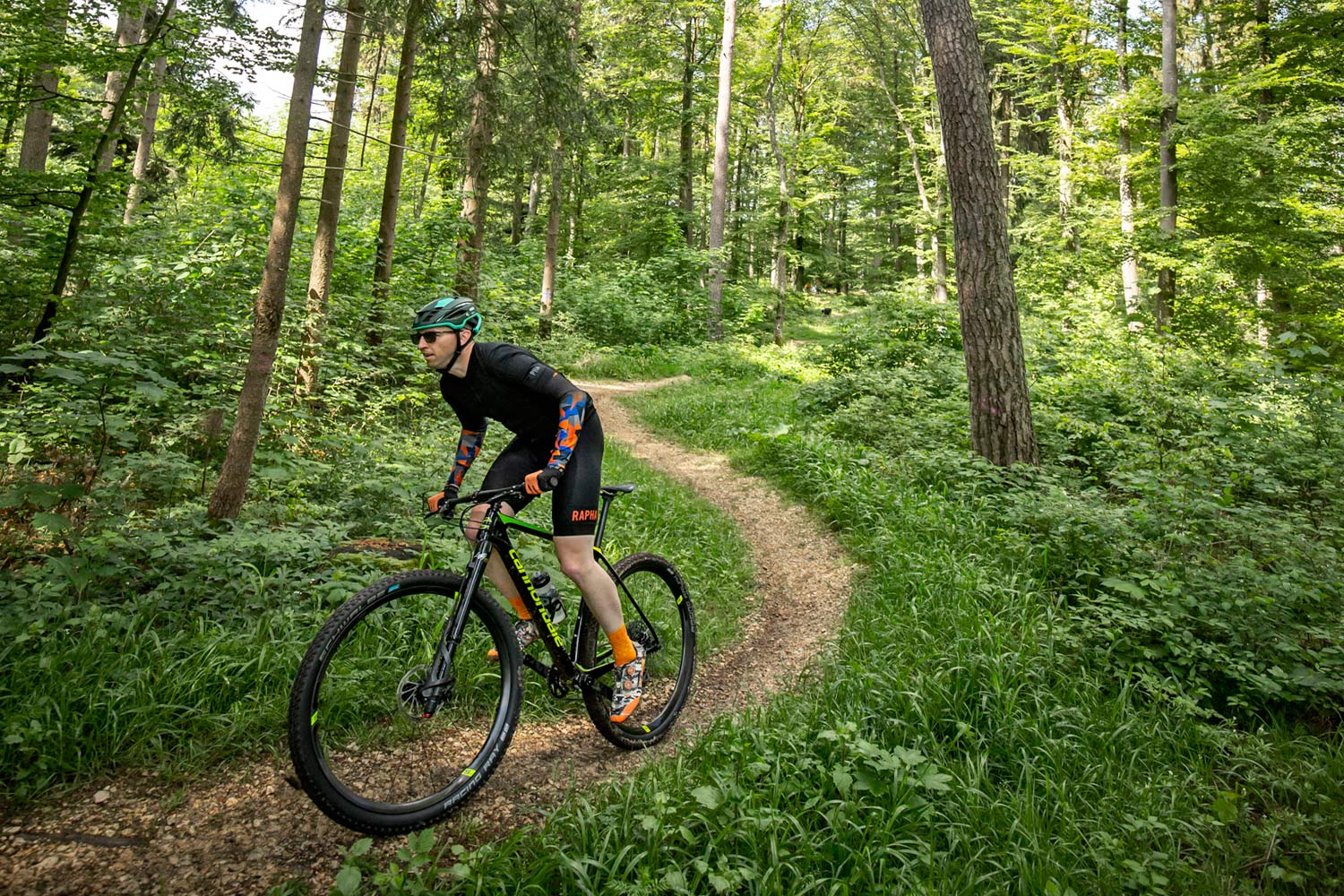Just before the weekend of World Cup cross-country racing in Albstadt, Germany we got the opportunity to put in a few first rides on Cannondale’s next generation carbon XC hardtail and its all-new accompanying single crown Lefty fork. Built as an ultimate race hardtail for the steep & technically challenging terrain of modern courses, it was a perfect opportunity to turn some hot laps on the World Cup race track, together with the frame & fork’s design team.
Steep climb & slick descents on the F-Si with Lefty Ocho
Kept closely under wraps until this past weekend, Albstadt was the first race where the Cannondale Factory Racing team got to compete on the new lightweight carbon hardtail and one-legged carbon fork. Albstadt’s course has a lot of steep climbing and only a few short, but unforgiving technical sections, so it is one of the few tracks where the majority of pro riders opt for the lighter weight and improved climbing efficiency of a carbon hardtail. Still this isn’t a cake walk of a course, and it’s safe to say that there were more than a hundred crashes in the weekend’s racing – mostly in the U23 men’s and elite women’s racing which seemed to face the most slick race conditions over the rain-soaked course.
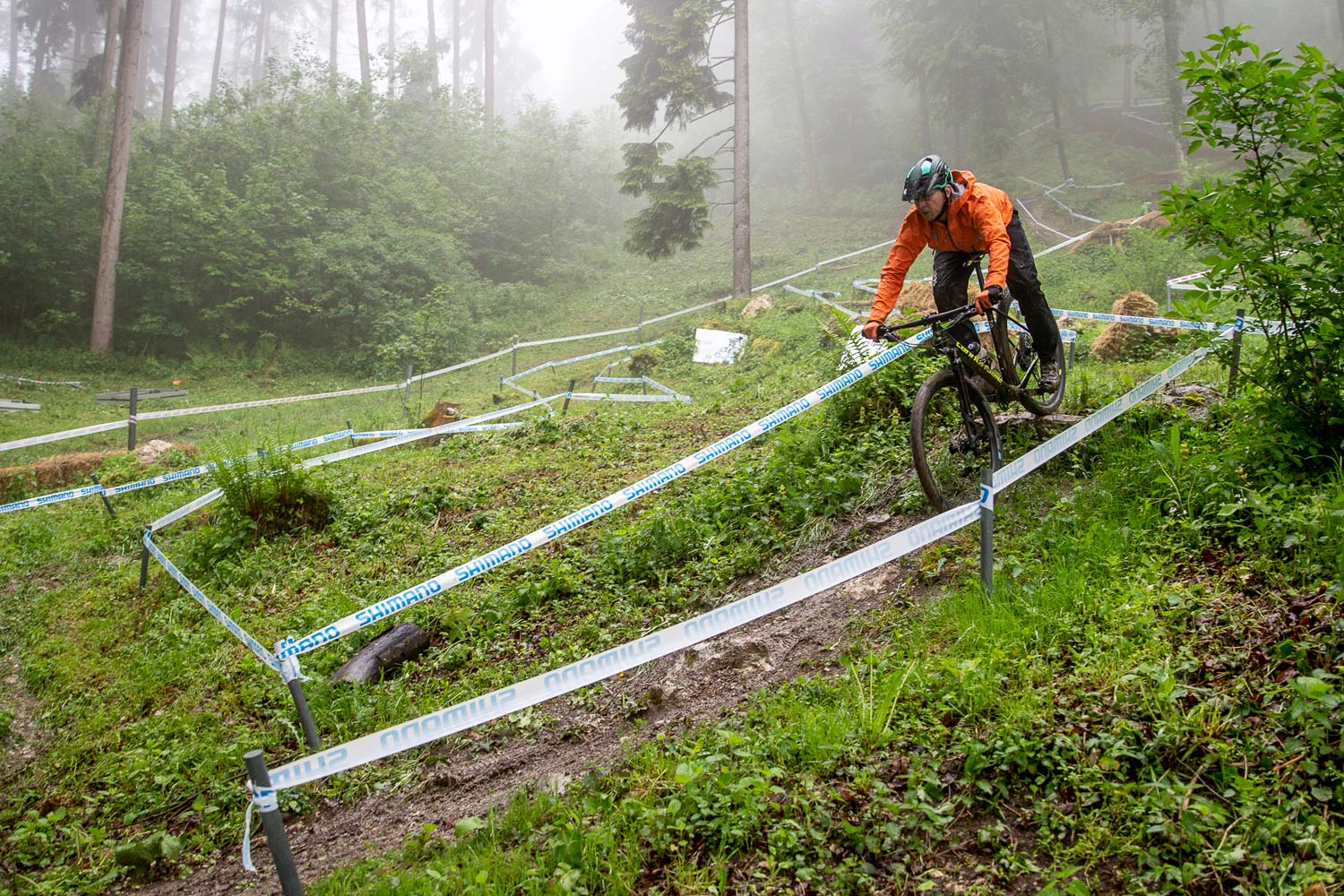
I got to ride the course on Thursday morning before the pros really started on-course training. And the conditions were brutal. Heavy rain before and during my Thursday rides left the grassy sections slippery, the exposed roots & rocks sketchy slick, and the forest dirt downhills effectively a slip-n-slide. In her course preview a day after I rode it in the rain, ultimate elite women’s winner Jolanda Neff described the conditions like riding “peanut butter on some ice“. And that’s after she said she preferred racing in the rain & mud.
Key Tech Details
The biggest tech standout on the bike is actually that new Lefty Ocho Carbon fork. Gone is the oversized double crown, in favor of a much more sleek single crown design. The new carbon fork drops 250g off the last generation and has updated stiffness that promises to maintain steering precision, while being more forgiving through technical sections like rock gardens.
For the frame, besides the newly adopted standard 1.125-1.5″ tapered headtube to work with the new fork, this top World Cup lightweight hi-mod frame is said to weigh just 900g. It gets XXC Scalpel-inspired modern trail OutFront geo with a slack for XC 69° head angle and larger than normal fork offset to compensate.
Bike setup
At 185cm/6’1″ I rode a size large frame, and the World Cup spec bike had a full XX1 Eagle groupset with Level Ultimate brake. Thinking of the bike being more trail capable, Cannondale spec’s all the new F-Sis with wide 760mm, knowing that they can always get cut down.
Because of the uniquely spaced, Ai Offset rear end, the F-Si WC gets a special custom-Q XX1 Carbon crankset with a relatively wide 188mm Q-factor to work with the 83mm wide BB. The only way to go shorter would be to swap in a set of the 175mm Hollowgrams after market.
At 82kg/180lb kitted-out to ride, I hit directly on one of the tune suggestions printed on the lower leg of the Lefty. So that’s what I ran for a few days of riding and didn’t have any real reason to change it up in the short term – 143psi in the lower valve and a right-in-the-middle 7 clicks out of rebound damping. The sag guide setup lines on the inside of the carbon lower slider guard also make sure you have it dialed in from the start.
One peculiar thing about the bike is the fork’s remote lockout. Cannondale choose to spec their cable actuated fork with a lockout lever from Fox that can also lock a rear shock at the same time of a full-suspension. But is weird here, is that the lever position is reversed from what would be normal. The default mode for the Lefty Ocho is effectively locked out. Truly something you would only see on an XC race bike, I think.
Press the remote in to unlock the fork; tap the release to lock it out. It took my brain a couple of minutes to adapt; I would look down, see the lever pushed in and think my fork was locked out. That’s not really a big deal, except that accidentally touching the lever’s release button locks the fork out. Hit it on a bumpy descent, and boom – locked out suspension.
Cannondale says it’s a result of just how the Fox lever works, but did say that there is an after sale service solution that would swap some internals to make it work in a more conventional way. It apparently isn’t something an at-home mechanic could do (or probably even your LBS), but Cannondale service centers can take care of it.
The F-Si’s new 29×2.25″ Schwalbe Racing Ray & Ralph combo seemed like a good all-around XC race or generally riding spec on paper. With the first rides in greasy mud, I seemed to think that might have been a bad idea. But really after watching so many U23 men & Elite women slip out with a wide range or tires it was clear that the greasy conditions wreaked havoc on any tires. Then some more riding over the next days in more mixed terrain, and the tires seemed to come into their own. Especially getting the tires down to around 23-25psi set up tubeless on the new ENVE M25 wheels made a big difference, with their wide hookless bead eliminating any real threat of pinch flats.
First Riding Impressions
Albstadt XCO World Cup course
OK, to say I got to turn a few hot laps of the Albstadt race course might be a bit of an exaggeration. In heavy rain the course was a slick mud fest. Known for steep climbing and quick descents, the course is ripe for a hardtail. In the end the climbs pretty much all drain really well, and despite some slick wooden bridge switchback climbs, the power delivery of the F-Si was spot on.
The bike comes spec’ed with a race ready 34T chainring paired to the 10-50 Eagle cassette. I still felt like I was climbing up some of the steepest parts of the course at a snail’s pace in the easiest gear, but the front end stayed stuck to the trail for the most part. And the fork didn’t bounce up and down whether locked or not when I was climbing seated. A smaller chainring might suit less powerful riders, but on the steepest bits I felt like I was at a threshold where any slower and I would have a hard time staying upright.
Once I accepted my fate of slipping and sliding I started to appreciate throwing the capable Lefty Ocho with its wide handlebar into little drops, through slippery rocks, and over wet roots.
While slick conditions didn’t favor weighting the back wheel at all, when I leaned forward onto the fork, it stuck to the ground much better, offering as much grip as I could hope for. I only came off the bike in one spot on the entire track after a few laps which I will take as an accomplishment. With that said I steered clear of the two A lines that put a dozen of the world’s best XC riders over the bars.
Steep gravel forest roads and singletrack network around Albstadt
Luckily after a muddy World Cup course recon, the sun came out and trails dried up. So I took the chance to explore drier trails across the valley from the race venue. With more paved, then gravel, then dirt forest road, and finally singletrack climbing, the F-Si reaffirmed that it could go up hill as fast as my legs were willing to put the power down.
But the bike really became more fun when the trails tilted down. That’s not something I say too much about a hardtail, but it is getting more frequent as companies evolve trail-riding geometry into XC race bikes with forgiving rear ends and capable front suspension. When the grip was pretty reliable for the landing, the frame and fork seemed to beg to get airborne. At just 8.4kg claimed for the $9000/8500€ F-Si World Cup I was riding, it’s not a big surprise that it was easy to boost the bike into the air. The bigger deal was that I never felt held back by the short 100mm fork travel or rigid rear end for all-around trail riding. (I did get kicked in the butt a couple of times, and would want a dropper if it was my personal bike.)
The tight Ai rear end delivers snappy handling & quick sprints, but with thin enough seatstays to offer some compliance over bumpy terrain. There’s also plenty of tire clearance for XC race rubber, with room for at least 2.35″ tires even in mud like I encountered. I also was a little worried about the hidden seatpost clamp, especially to make any adjustments on the trail since the bikes don’t get spec’ed with droppers. I was then happy to see that the binder bolt angle was such that most multi-tools could fit in there. And even a three-way allen key would fit, even spinning past two bottle on a large frame. Plus, even though the bike spec doesn’t include a dropper for the 27.2mm post, Cannondale Factory Racing team riders and at least one Cannondale engineer had a dropper on their own bikes.
Final Thoughts
Cannondale calls their trail-ready XC geometry OutFront, with a longer front end, slack head angle & lower trail combined with short 427mm chainstays. That makes the 29er race bike do really well both picking through technical sections fast or slow, and still climbing & accelerating quickly. The front end did still feel long on the steepest switchback climbs, only then did I feel like I had to work a bit harder to get my front wheel to stick on my desired line. But it felt calm and collected whenever the trail flattened out of went down again.
In its first race outing Maxime Marotte of Cannondale Factory Racing rode it to a fourth place finish, and the CFR team took the Team win, all on the new bike as well. Not too bad.
All in all it seems like the F-Si + Lefty Ocho combo can double as a proper pro-level race hardtail and a lightweight, competent singletrack trail bike as well. We’ve only ridden the premium hi-mod carbon frame and carbon Lefty fork, although we are told the performance is the same for regular carbon frame & alloy fork, just with about a 400g total penalty. We’ll look forward to spending more time riding the bike, maybe even having a look at one of the XS 27.5″ bikes for our smaller test riders who often end up with compromised ride feel & geometry on their XC bikes.

